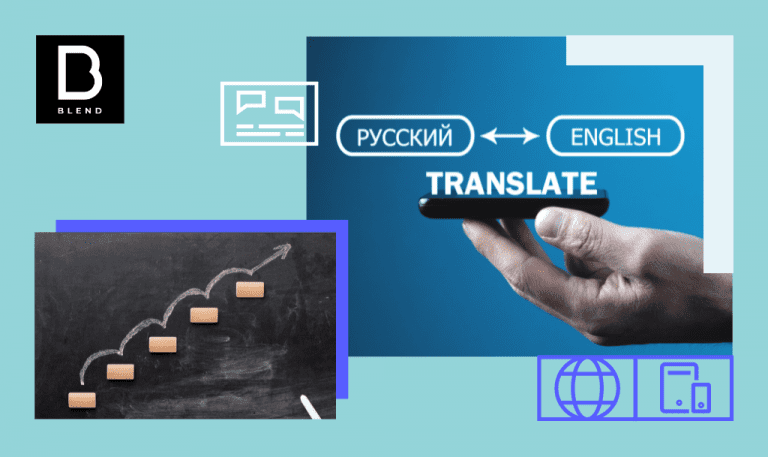Liraz Postan
Liraz is an International SEO and Content Expert with over 13 years of experience.

Let’s have a closer look at the three main stages of the translation process, and why each stage is so important.
Most translation clients, when first contacting a translation agency or independent translator, don’t expect to be offered various stages or steps for the service requested; all they know is that they have a text that they need to be written in either a different language or a set of languages.
The language translation process is a complex and intricate endeavor that involves bridging linguistic and cultural gaps to convey a message accurately and effectively in another language. It requires a deep understanding of both the source and target languages, as well as a keen awareness of cultural nuances. Translators must not only translate words but also capture the intended tone, context, and emotions of the original text.
They often use various tools and references, such as dictionaries, translation software, and style guides, to aid in their work. Quality assurance and thorough review are crucial to ensure the final translation is free of errors and resonates with the target audience, whether it’s for business documents, literary works, or multimedia content.
So let’s have a closer look at the 3 stages of translation process, and why each stage is so important.
Translation means to render a text that is in one particular language, to another language. It’s the accurate transference of information in order to represent the original document to the target document.
This first translation process step is typically done with a computer-assisted translation tool, or CAT, such as Wordfast or Trados. These tools divide the original text into segments, generally full sentences, to enable the translator to translate segment by segment. It’s very common in the translation industry to use translation tools, but today it has become quite essential for anyone working effectively in this field. Possibly the only problem this method has is that the translator doesn’t have a clear or overall vision of the text.
Today, when we refer to editing in the field of translation, we are referring to reviewing what has been completed in the previous step; we review the translation created from the original text. In this step, the editor also works with a translation tool, however his or her task is not about translating, but more about revising segment by segment, ensuring that the translator has made an accurate and faithful translation of the original document; that they have completely understood the text and not missed any information; that there have been no omissions, and that any guidelines given by the customer have been fully complied with.
Generally, at this stage, the editor will begin work with a CAT tool, which means that they won’t be able to clearly see the text as a whole, however, during the final stages of editing they will ensure that the sentences and the document as a whole make perfect sense in the overall context of the project or document.
In this final step in the process of translation, we know that the translation and editing stages of the text have been completed, so in the proofreading or correction stage it should not be necessary to refer to the original text. This final review will focus mainly on the premise that the translated text sounds natural and reads smoothly in the target language, in addition to detecting any inconsistencies with regard to punctuation and capitalization.
Document formatting must be checked for possible issues relating to fonts and images, plus the document must be checked for any typographical errors.
In short, no.
Professional translators are introduced to this three-step methodology as a fundamental part of their advanced translation education. This method becomes ingrained in their approach, and they inherently recognize its importance, refraining from taking shortcuts.
For seasoned translators, these steps are simply part of the routine, representing the standard protocol for conducting translations. However, the same cannot be assumed for untrained translators.
Without the benefit of formal translation training, it’s improbable that someone would naturally embrace these steps or even comprehend their necessity. Consequently, it’s not surprising that untrained translators often employ processes that not only fall short of best practices but also lack the resilience required to overcome the inherent challenges of the translation process.
In many cases, these individuals are blissfully unaware of the deficiencies in their translation methods, which, in turn, can impact the quality of the work they produce.
When a translation project faces a tight deadline that doesn’t allow for the completion of all necessary translation steps, compromises inevitably occur.
In a broader context, when translators experience stress due to time constraints, the overall quality of their translations tends to suffer. This is because translation is a cognitively demanding task that requires translators to be in a relaxed, focused, and clear state of mind. They must block out external distractions and pressures.
The consequence of rushing or being under excessive time pressure is a noticeable decline in translation quality. It becomes much more likely that the translation will contain errors or inaccuracies. Additionally, certain sections of the text may lack clarity, naturalness, or elegance.
Whenever possible, we strongly recommend allocating a bit more time to the project so that all steps in the translation process can be carried out. This approach is likely to result in a significantly higher quality translation in the end.
All these translation processes must be followed in order to obtain a final translated product of the highest quality. Each of these steps is essential for different reasons, and these steps should be clearly explained to translation clients to make them aware of their importance.
Looking for localization services or translation services? Contact us today!
What our customers are saying